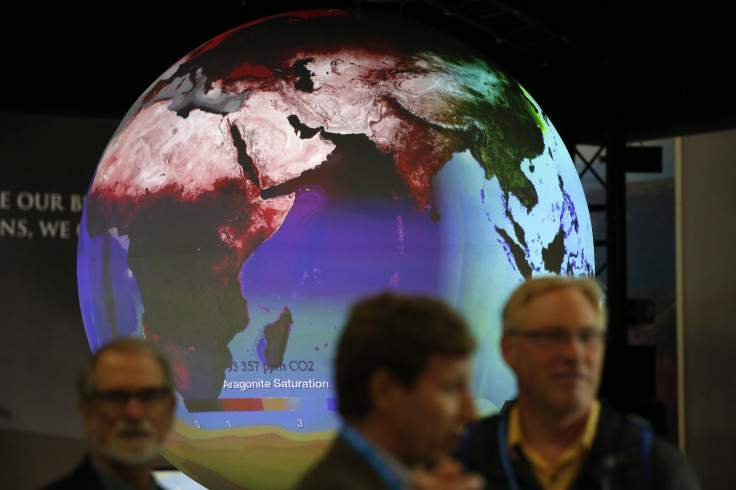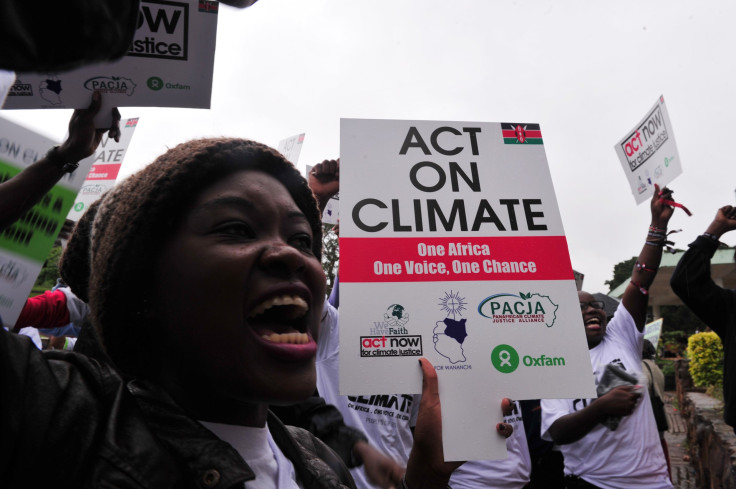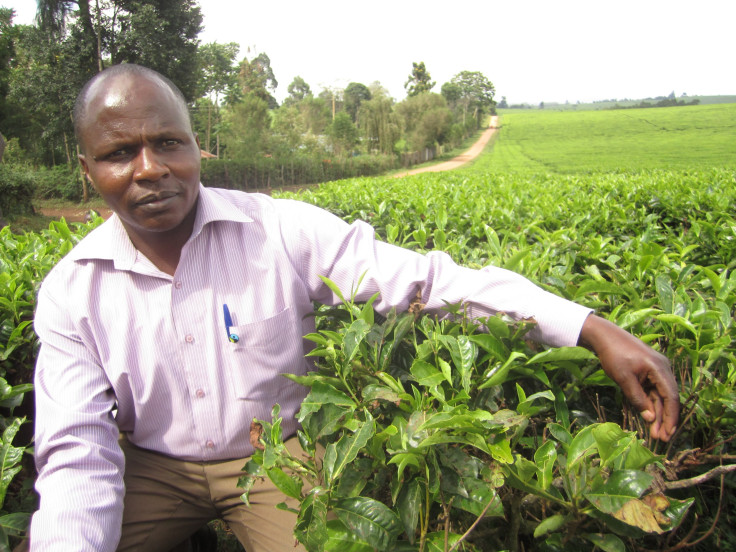Paris Climate Talks 2015: Africa's Global Warming Fight Needs Greater Financial Support, Experts Say

Kenyan farmer Victor Biwot was waiting for the rainy season to start in February last year so he could plant maize and tea on his fields in Nandi Hills, a highland nestled at the edge of the Great Rift Valley known for its green rolling hills. But the rains didn’t come for months, and the area’s lush grass turned brown. Biwot, whose main source of revenue is tea, was forced to delay planting his crops until May.
“When you have nothing to harvest, you don’t sell anything for months,” he said. “We depend on that income.”
The impacts of climate change, such as erratic rain cycles, pose a daily threat to Biwot and other African farmers who rely on their crops for money and food. Africa is the world's lightest polluter, but the continent bears the brunt of global warming effects, which is why many of its leaders are pushing for an agreement at the Paris summit this week to slash greenhouse gas emissions and combat climate change. But these impoverished nations, already suffering devastating costs from the world’s rising temperatures, lack the domestic resources to meet these ambitions, environmental leaders and experts said, underscoring why the climate talks are crucial to securing much-needed international financial support.
Six years ago, developed countries committed to a goal of jointly mobilizing $100 billion per year by 2020 via public and private financial flows to fund climate-related projects in the developing world. The Organization for Economic Cooperation and Development (OECD) said more than $60 billion has been committed. However, those funds are far from enough. And less than one-third of it currently reaches the poorest nations, according to a November report from the London-based International Institute for Environment and Development. It would take about $93.7 billion each year for the poorest and weakest segment of the international community -- the “Least Developed Countries,” according to the United Nations -- to implement their post-2020 climate action plans.
“$100 billion would be an optimistic figure if it was only being targeted to Least Developed Countries,” said Neha Rai, the lead author of the International Institute for Environment and Development report.
The report found that the lion’s share, about 70 percent, of public climate finance available each year goes to the developing world’s wealthier countries. In fact, six countries – Brazil, China, India, Morocco, South Africa and Turkey – receive as much money as all 48 Least Developed Countries together, 34 of which are in Africa. There are other developing countries not included in the least-developed category that are still considered among the world's poorest, and they also receive small amounts of funding for climate-related projects. For example, Kenya, where 42 percent of the population lives in poverty, has received just $1 million of the pledged $100 billion fund so far. The East African country will require more than $40 billion to roll out its plan of cutting greenhouse gas emissions by 30 percent over the next 15 years, Kenya’s Ministry of Environment and Natural Resources said.
“Even if you scale up financing, there’s a likelihood again that the money will go to the middle-income countries,” Rai added.

The richer nations are getting the bulk of the funds because their economies are able to absorb concessional loans, which typically offer below-market rates, better than lower-income countries. Also, a disproportionate amount of the money is flowing toward mitigation actions to finance projects in the lucrative energy sector, like building hydroelectric power plants, rather than adaptation actions, such as increasing flood protection.
Mitigation projects can be easily financed through equity and loans, but adaptation projects often provide public goods, which attract less private investments. Emerging economies like China have large mitigation projects that aim to reduce the magnitude of climate change itself. Meanwhile, the Least Developed Nations and other impoverished countries are more focused on adaptation, which involves efforts to limit vulnerability to the impacts of climate change but tend to attract less public investment.
“Mitigation is where most of the commercial money can be used,” said Giza Gaspar-Martins, chair of the Least Developed Countries Group under the United Nations Framework Convention on Climate Change. “We cannot forget there are adaptation actions that need to happen in these developing countries that probably contribute the least to climate change but are in parts of the world where they experience the most effects.”
Part of the problem is a failure to balance funding between adaptation and mitigation, as well as an absent definition of what exactly constitutes climate finance. The 2009 Copenhagen agreement stated the pledged $100 billion would “come from a wide variety of sources, public and private, bilateral and multilateral, including alternative sources of finance.” Wealthier countries want the money to come from private investors and loans, while poorer nations seek aid in the form of grants, which are essentially free money.
Jennifer Olson, an associate professor at Michigan State University in East Lansing, Michigan, who researches the impact of climate change on agricultural communities in Africa, said negotiators in Paris must consider the fact that Africa is dealing with detrimental impacts of climate change now, such as rising sea levels. These effects must be addressed immediately through adaptation actions, she added.
“Since a lot of African cities are coastal cities, that means harbors will have to be rebuilt and sewage and water systems will have to be updated and moved,” Olson said during a telephone interview. “That’s going to be enormously expensive.”
Edith Ofwona-Adera, senior program specialist at Canada’s International Development Research Center, said it’s important to mobilize the private sector to support adaptation projects because private sector finance to date has largely focused on mitigation.
“Africa of course needs quite enormous resources to effectively confront the challenges that these impacts of climate change have on its people, its infrastructure and its economies,” said Ofwona-Adera, who manages the group’s climate change projects in Africa and is attending the Paris summit. “I think it’s important to balance not just public financing, but we need to begin to encourage the private sector as well.”

Rising sea levels and coastal storms have destroyed parts of Kenya this year, where floods have turned some streets into rivers. At the same time, this extreme weather causes rain to be sporadic and even absent in other areas. Biwot, the Kenyan tea grower, said he now plants his crops anytime he sees rain because he can no longer trust the climate systems that he once relied on.
Biwot temporarily left behind his fields this week to attend the Paris summit along with other Fairtrade producers who advocate for international trade justice and improved environmental standards. Biwot said smallholder farmers in Africa are doing their part on the ground in developing adaptation plans, such as adjusting their practices and adopting new crop varieties. But their livelihood still depends on increased support from the developed world.
“We are trying,” said Biwot, who is also the operations manager at the Sireet tea cooperative in Kenya. “Whatever African nations can do, they should do it. But it’s not fair for them to be compared to western countries and China, which are the biggest emitters.”
© Copyright IBTimes 2024. All rights reserved.





















